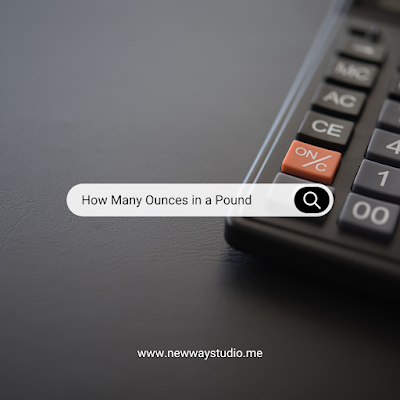Weight measurement is an essential aspect of our daily lives. Whether we're cooking in the kitchen, shipping packages, or tracking our body weight, we need to understand the different units of measurement and how to convert them. One common question that often comes up is "how many ounces in a pound?" In this article, we'll explore the answer to that question and delve into other aspects of weight measurement.
Before we can answer the question of how many ounces are in a pound, we need to understand the conversion between the two units of measurement. One pound is equivalent to 16 ounces. So, if you have a weight in ounces and you want to convert it to pounds, you simply divide the number of ounces by 16. For example, 32 ounces would be equal to 2 pounds.
Ounces to Pounds Calculator
If you're not a fan of doing math in your head or on paper, you can use an online ounces to pounds calculator. These calculators are easy to use and allow you to quickly convert between the two units of measurement. Simply enter the number of ounces you have, and the calculator will give you the weight in pounds.
Weight Conversion Chart
For those who need to make frequent weight conversions, a weight conversion chart can be a helpful tool. These charts provide a visual reference for the conversion between different units of measurement, including ounces and pounds. They can be especially useful in a kitchen setting, where recipes often call for specific weights.
Units of Measurement
Weight measurement is just one of many types of units of measurement. Other common units include length, volume, and temperature. Each unit of measurement has its own set of conversions and tools for calculating them. It's important to have a basic understanding of each unit of measurement in order to make accurate calculations.
Standard Weights and Measures
Standard weights and measures are established by various organizations and government bodies to ensure uniformity and accuracy in measurement. These standards help to avoid confusion and mistakes when measuring and converting between different units of measurement. In the United States, the National Institute of Standards and Technology (NIST) is responsible for maintaining these standards.
Imperial Units
Imperial units are a system of measurement that originated in Great Britain and are still used in some parts of the world today. The system includes units of measurement for length, volume, and weight. The pound, which is made up of 16 ounces, is one of the most commonly used units in the imperial system.
Metric System
The metric system is a system of measurement that is used by most of the world's population. It includes units of measurement for length, volume, and weight, among other things. The basic unit of weight in the metric system is the gram, and there are 1,000 grams in a kilogram.
Weight Measurement in Cooking
In cooking, weight measurement is often used to ensure that ingredients are added in the correct amounts. Measuring cups and spoons are commonly used for measuring volume, but weight measurement can be more accurate, especially for ingredients that are more dense. A kitchen scale is a useful tool for accurate weight measurement in cooking.
Shipping Weights and Measures
Shipping weights and measures are important for ensuring that packages are not too heavy or too large to be shipped. Different shipping companies have their own weight limits and restrictions, so it's important to be aware of these when sending packages. A digital scale can be a helpful tool for measuring package weight.
Body Weight Measurement
Body weight measurement is important for tracking weight loss or gain, as it can be an indicator of overall health. The most common unit of measurement for body weight is pounds or kilograms. A bathroom scale is a common tool for measuring body weight. It's important to weigh yourself consistently, preferably at the same time of day and under the same conditions, to get accurate and reliable measurements.
Weight Loss Tracking
If you're trying to lose weight, tracking your progress is important to stay motivated and on track. There are many ways to track weight loss, including measuring body weight, taking measurements of different body parts, and tracking progress photos. There are also many online tools and apps that can help you track your weight loss progress.
Kitchen Measurement Guide
A kitchen measurement guide can be a helpful tool for anyone who cooks or bakes. These guides provide information on how to convert between different units of measurement, as well as tips for measuring ingredients accurately. Many guides also include common ingredient weights and volumes for reference.
Online Measurement Converter
If you need to convert between units of measurement frequently, an online measurement converter can be a useful tool. These converters are available for free on many websites and allow you to quickly convert between different units of measurement. Some converters even allow you to save your most commonly used conversions for easy access.
American vs British Measurement System
The American and British measurement systems are similar in many ways, but there are some key differences. In the United States, the customary system is used, which includes units such as inches, feet, and pounds. In Great Britain, the imperial system is used, which includes units such as inches, feet, and stones. While these systems are similar, it's important to be aware of the differences when converting between them.
Conclusion
In conclusion, weight measurement and conversion is an important aspect of our daily lives. Whether we're cooking, shipping packages, or tracking our body weight, understanding different units of measurement and how to convert them is essential. By using tools such as weight conversion charts, kitchen measurement guides, and online converters, we can ensure accurate and reliable measurements. So, the next time you're wondering "how many ounces in a pound?" or need to make any other weight conversion, you'll have the knowledge and tools to do so.

